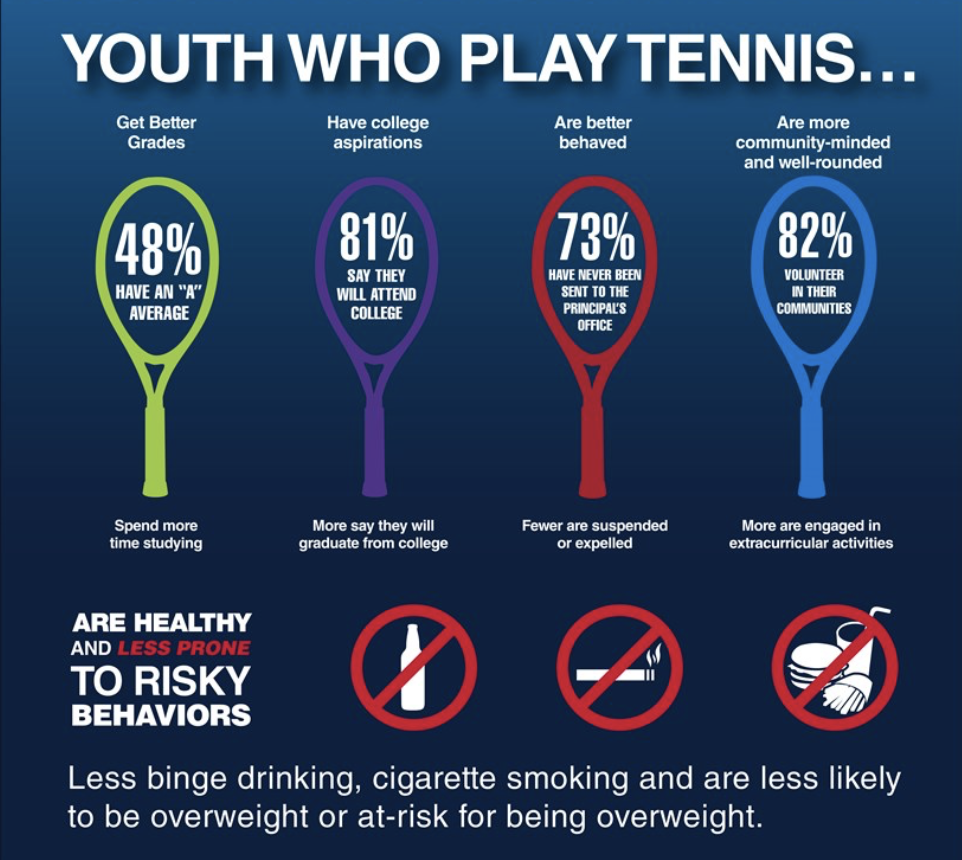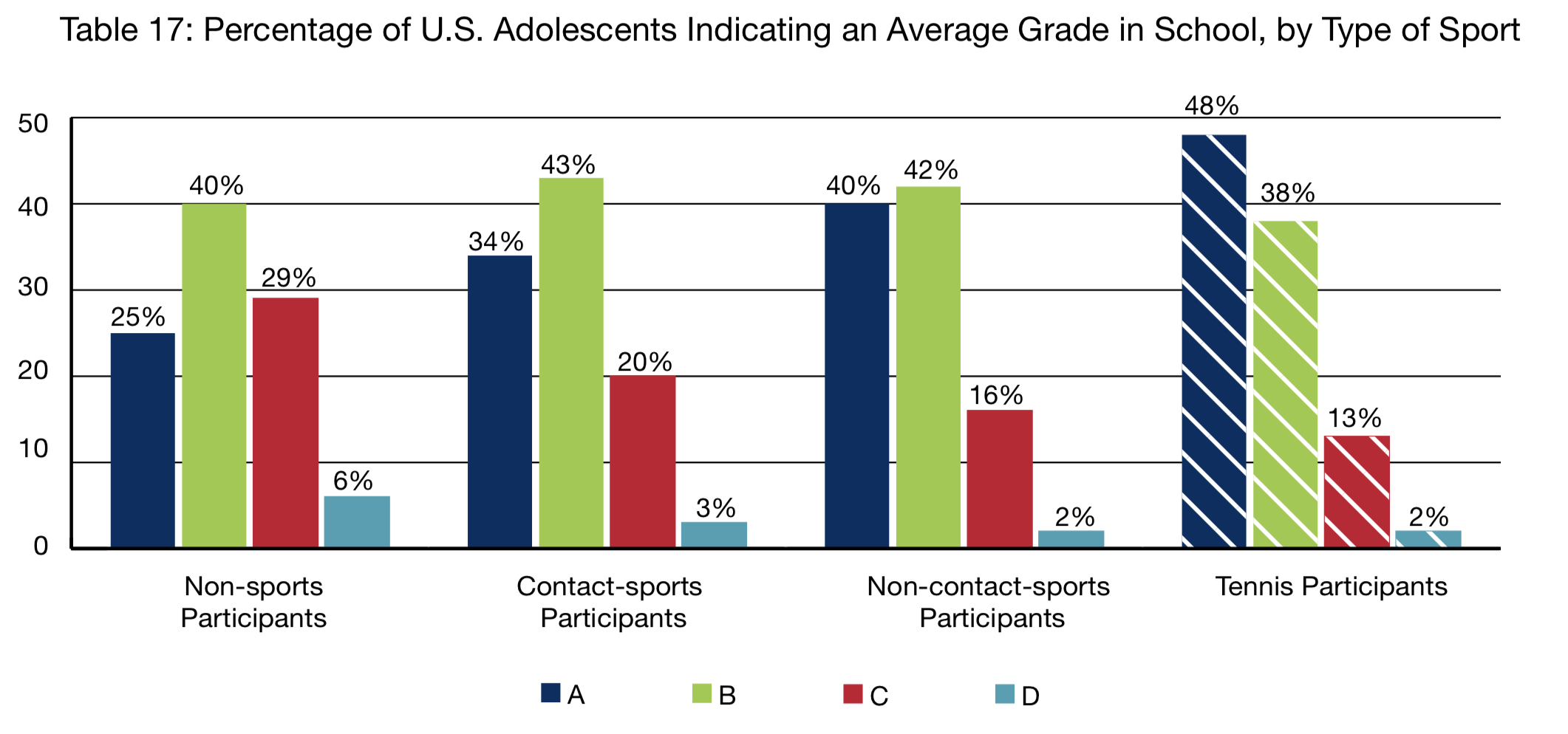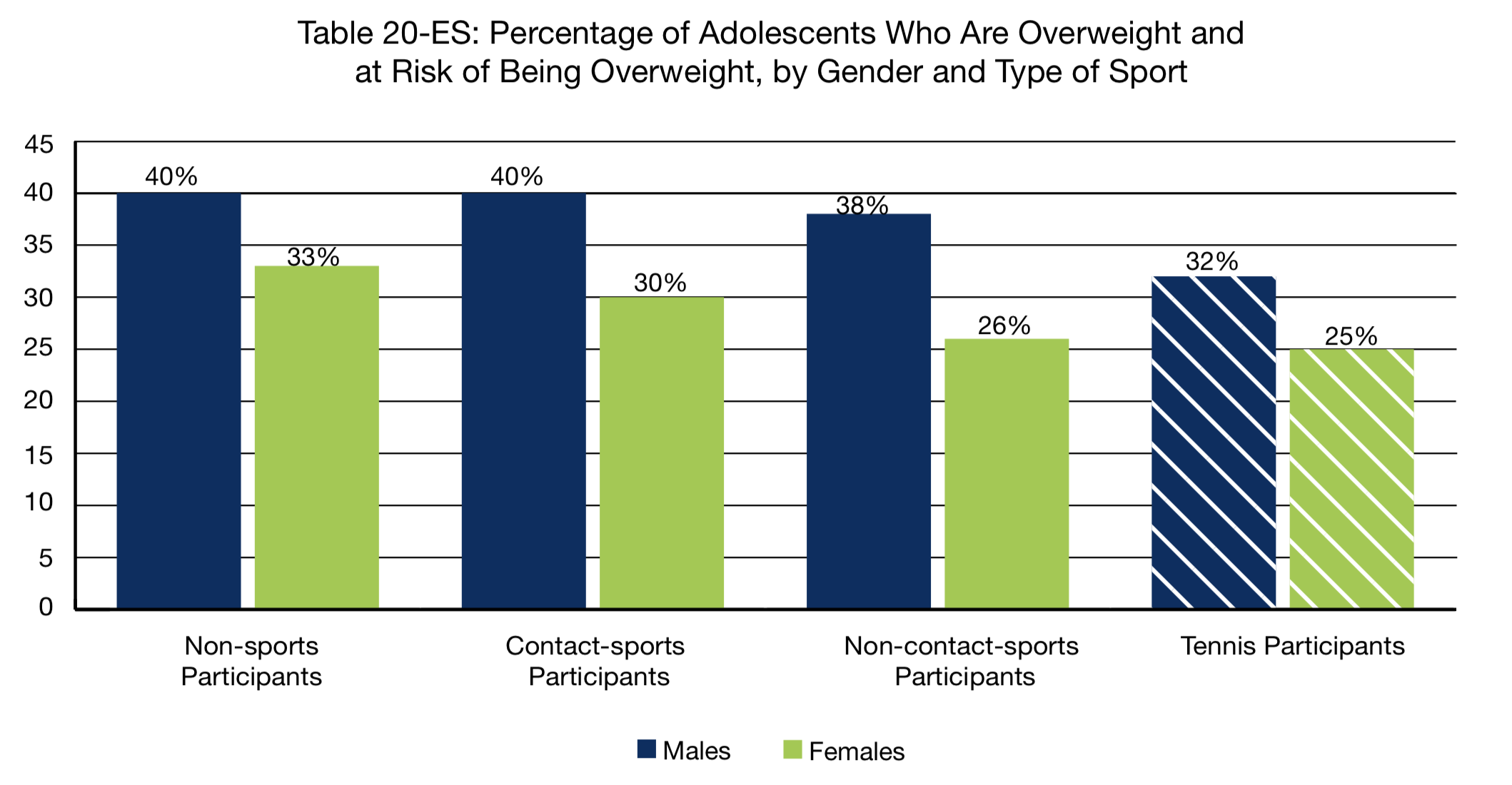More than a sport: evidence that tennis participation positively influences the lives of U.S. adolescent
We recently talked about few benefits of playing tennis in our blog “What Can Children Learn at Camp That They Can’t Learn in School.”
Were you aware, however, that tennis is also linked to a child’s school performance, social behavior, lower rates of suspension from school, and contribute to adolescent health?
Most people are well aware that participation in sports is linked to physical and health benefits in adolescence. In a recent data from Monitoring the Future (MTF), a highly respected, federally funded survey, researchers compared the education and health profiles of tennis players specifically, with other high school athletes, as well as with high school students who do not participate in sports.
The study confirmed that the majority of adolescent tennis players score better than most other athletes and all non-athletes on education, social behavior.

The detailed study can be read here. Additionally, those benefits also cross all socioeconomic levels. Below are the key findings and a brief discussion and summary of each.
1. A positive relationship between tennis participation and academic performance as well as significantly lower rates of suspension from school were evident.
Why do tennis participants show a better academic performance than their athletic and non- athletic counterparts, and why those results seem to stretch across family socioeconomic- levels?

The study does not explain this, however, we have theories.
Tennis players train in problem solving all the time, during each, and between, each point. It is you against one opponent. Cunning, anticipation, ability to identify weaknesses in the opponent’s game, concentration, and mental recovery – those are all tactiques and skills used to become successful in outwitting opponent, even those that are far more powerful.
“Outwit” is the key word. Additionally, the sport of tennis certainly teaches a skill-set that equips people to become successful – for example, getting good at winning, but also failing, and realizing that failing is not really a big deal.
On the court, you fail more than succeed – you fail hundreds or even thousands of times a day, every time you miss a shot. Realizing failure among the rest of the above mentioned skills, is part of the learning process that can potentially foster school success, educational aspirations, and avoiding behavioral issues leading to suspensions and expulsions.
Additionally, playing fair and shaking hands at the end of an intense match (it is how tennis players show their opponent respect and sportsmanship) are both acts of a decent human being (heavily promoted by all tennis coaches, parents, and officials), which are key to being successful in anything.
2. Adolescent tennis players are well-rounded.
According to the study, tennis participants also reported higher rates of involvement with extracurricular activities, both in their school and communities, in comparison to those students that played other sports or did not play any sports.
The study suggested that it might be the coed nature of the sport that opens more social-psychological “doors” to adolescents than traditional contact sports, which could help them to be more receptive to music, arts, volunteering, and community events participation.
Although, further studies to examine why this is so are necessary, the conclusion from this part of the survey is clear – tennis participation is associated with greater youth engagement in other extracurricular activities, although this becomes less frequent as family socioeconomic level decreases.
3. Tennis contributes to adolescent health.
According to Dr. Jack L. Groppel’s publication on the Tennis Industry Association website, tennis helps with, among other things, increased speed, leg strength, agility, bone strength and density, flexibility and eye-hand coordination.
The study, however, also shows that, compared to non-athletes and contact-sports participants, tennis players reported lower risk for being overweight than non-athletes and participants in many other sports (especially contact sports), lower rates of binge drinking, marijuana use and cigarette smoking.

Being less prone to key adolescent health-risk behaviors than non-athletes and contact sports participants could be related to fact that most tennis players realize that being successful in tennis requires a lifestyle and focus turned toward physical fitness and conditioning.
4. Adolescent participation in tennis varies by race/ethnicity and gender, socioeconomic level, as well as across geographic regions.
According to the study (page 5, table 4) the racial/ethnic composition of all U.S. adolescent tennis participants, Whites comprised 77%, Blacks were 9%, and Hispanics were 14% of the total.
Given that, according to the U.S. Census Bureau, 72.4% of the U.S. population is White, 12.6% of the U.S. population is Black, and 16.3% of the U.S. population is Hispanic, minorities appear to be underrepresented among tennis participants.
While tennis remains a predominantly White sport, gender representation is equitable (47% were male and 53% were female), and there is some evidence that youth participation is expanding in middle- and lower-socioeconomic levels.
According to the report, “young people’s access to athletic opportunities is often influenced by family socioeconomic levels and financial resources” [1]. Page 5, table 5 shows that participation in tennis increased with family socioeconomic level – only 5% of young people with parents with less than a high school education reported playing tennis, compared to 12% of those with college- educated parents.
Adolescent participation in tennis varied across geographic regions. Nine percent of all U.S. adolescents participated in the Northeast, compared to 7% in the North Central states,
8% in the South and 9% in the West. Therefore, it appears that the most racial and ethnic diversity in adolescent tennis participation among males and females exists in the South.
5. The educational advantages among tennis players occurred across and within all family socioeconomic levels.
The educational and social advantages associated with tennis participation were strongest among adolescents from higher-socioeconomic-level families, but still present in families with middle- and lower-socioeconomic levels.
These were also higher when compared to other high school sports participants and those who did not participate in sports at all.
The results from report, which we discussed in this article, demonstrate an evidence that tennis participation positively influences the lives of U.S. adolescents by improving health, building character, teaching life skills and motivating all participants to strive for academic excellence.
References:
Sabo, D., Veliz, P. and Rafalson, L. (2013). More Than a Sport: Tennis, Education and Health. White Plains, NY: USTA Serves.
U.S. Census Bureau. 2010 Census. Retrieved from: https://www.census.gov/programs-surveys/decennial-census/decade.2010.html


